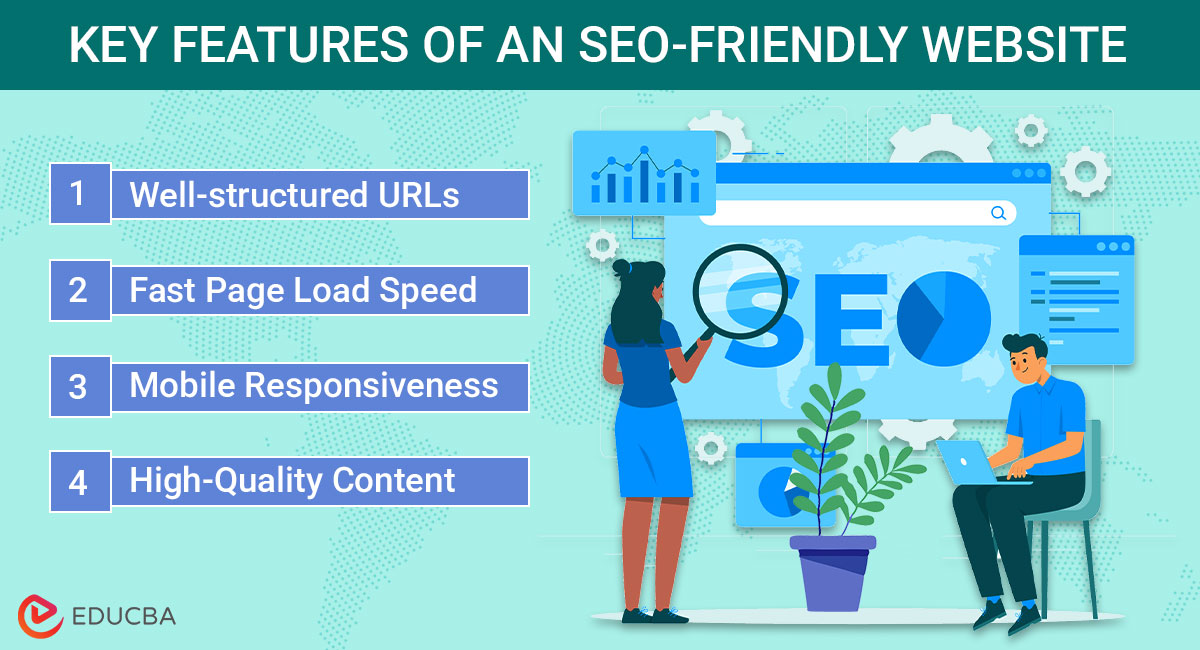
What is an SEO-Friendly Website?
In the digital landscape, being discoverable online can significantly impact your business’s success. But is your site truly SEO-friendly? This question becomes critical as businesses strive to reach their target audience through organic search channels. An SEO-friendly website means constructing your site to be easily understood by search engines, boosting its visibility in relevant search results. By improving your site’s structure and content, you will boost its performance on search engines and enrich the user experience. Enhancing a site’s SEO is akin to streamlining a machine for peak performance. If you are eager to improve your site’s SEO, grasping these basic principles is essential to broader success.
Key Takeaways
- An SEO-friendly website combines technical structure, relevant content, and a smooth user experience to boost visibility in search results.
- Regularly evaluating your site with SEO tools helps identify and prioritize areas for performance improvement.
- Avoiding common mistakes like keyword stuffing and thin content is essential for maintaining search engine credibility and user trust.
- High-quality, keyword-optimized content consistently attracts, engages, and retains visitors while signaling value to search engines.
- Staying updated on SEO trends and adapting strategies is important to remain competitive in a fast-changing digital environment.
Key Features of an SEO-Friendly Website
What makes a website truly SEO-friendly? It is all about having the right technical framework and staying up-to-date with the latest technologies. Here are the key features of an:
- Well-structured URLs: Clear URLs that describe the content on the page help search engines understand what the page is about.
- Fast Page Load Speed: A delay of just one second in page loading can reduce conversions by 7%. In addition to providing a better user experience, fast websites are more likely to rank well in search engine results.
- Mobile Responsiveness: Having a mobile-friendly website has become crucial as more people visit websites on mobile devices.
- High-Quality Content: Content that includes relevant keywords and answers users’ questions helps search engines rank your site higher.
Evaluating Your Site’s SEO Status
It is important to evaluate the SEO performance of your website before making any significant changes. Various tools can help you evaluate your website’s SEO status. For example, Google PageSpeed Insights can analyze how fast your website loads and offer improvement tips.
You can also test if your site is mobile-friendly with tools highlighting display issues across different devices. Evaluating your SEO status helps you prioritize areas for improvement, making your website more effective for search engines and users.
Common SEO Mistakes to Avoid
Even if you are trying to improve your SEO, making mistakes that hurt your rankings is easy. Here are some common SEO mistakes to avoid:
Keyword Stuffing: Overstuffing keywords to your article can degrade its quality and result in search engine penalties.
Ignoring Meta Descriptions: Missing or poorly written meta descriptions can hurt your site’s visibility in search results.
Thin Content: Users will quickly quit your site if the content is not valuable enough. Focus on delivering in-depth, helpful information.
Avoid these mistakes to improve your website and maintain credibility with search engines and visitors.
How Quality Content Powers SEO?
In the world of SEO, content is king. Search engines prioritize pages that provide detailed, relevant answers to users’ queries. High-quality content boosts user engagement and signals to search engines that your page is valuable. Regularly publishing informative and keyword-optimized content helps to maintain high search rankings and build trust with your audience.
Importance of User Experience in SEO
An often understated yet pivotal aspect of SEO is user experience (UX). A well-structured and visually appealing site that facilitates effortless navigation significantly boosts user retention and satisfaction. Moreover, user experience impacts the likelihood of users completing desired actions, such as inquiries or purchases. Rapid page loading, seamless navigation, and mobile adaptability meet modern users’ expectations. Ultimately, a commitment to UX not only delights visitors but naturally garners favor from search engines, as holistic user engagement metrics play an increasing role in ranking algorithms.
Utilizing SEO Tools and Resources
The vast world of SEO can seem complex, but numerous SEO tools and resources exist to illuminate the path. From comprehensive keyword research databases to sophisticated backlink audit platforms, these tools offer invaluable insights. They enable marketers to hone in on potential improvement areas and execute fine-tuned strategies. By efficiently leveraging these resources, businesses can navigate SEO’s complexities with greater clarity and focus, fostering ongoing growth in visibility and engagement.
Keeping Up with SEO Trends
As technology rapidly evolves, so too does SEO. Maintaining vigilance over the latest SEO news and trends can not be overstated. Continuously adjusting strategies in response to algorithm changes or emerging technologies ensures your site’s sustained competitiveness. Proactiveness in this regard equates to staying ahead of the curve, already anticipating shifts before they fully unfold. By prioritizing education and innovation, businesses stabilize their current standing and future-proof themselves against an unpredictable digital landscape.
Final Thoughts
Creating and maintaining an SEO-friendly website is a continuous process. It involves technical improvements, high-quality content, and a strong focus on user experience. Using the appropriate tools and avoiding typical SEO errors will improve your website’s performance in search results. As search engines evolve, staying informed and adaptable is key to your website’s long-term success. By focusing on SEO, you unlock your website’s full potential and improve its visibility, driving more traffic and engagement in the process.
Recommended Articles
We hope this guide to creating an SEO-friendly website helps you improve your search rankings and online visibility. Check out these recommended articles for more insights on optimizing your web presence effectively.
